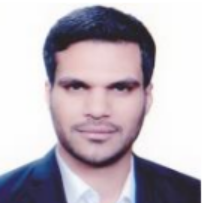
Ali J. Ramadhan
Work place: Department of Computer Techniques Engineering, College of Technical Engineering, University of AlKafeel, Najaf 1001, Iraq
E-mail: ali.j.r@alkafeel.edu.iq
Website:
Research Interests: Computational Engineering
Biography
Ali J. Ramadhan is a member of the Institute of Electrical and Electronics Engineers (IEEE), the Iraqi Innovation and Creativity Center, and the Iraqi and Arab Engineers’ Union. He is currently working as Assistant Professor in the computer engineering department at the University of AlKafeel, Iraq.
Author Articles
Overview and Comparison of Candidate 5G Waveforms: FBMC, UFMC and F-OFDM
DOI: https://doi.org/10.5815/ijcnis.2022.02.03, Pub. Date: 8 Apr. 2022
The fifth generation (5G) technology standard, utilizing the Internet of Things, promises enhanced communication systems. However, the efficiency expected from such systems entails significant requirements, such as higher data rates and flexibility of the lowest 5G layer. Meeting these requirements in subsequent wireless communication systems is highly dependent on the use of waveforms capable of efficiently enabling multiple access. In other words, proper waveforms determine the effective handling of diverse traffic within a given band. In this study, four candidate multicarrier waveforms, namely filtered orthogonal frequency division multiplexing, filter bank multicarrier, universal filtered multicarrier, and orthogonal frequency division multiplexing, which is currently used in 4G systems, are compared based on multiple parameters. MATLAB simulation results indicate that the waveforms significantly improved spectrum localization and provided appropriate spectrum fragmentation. As these waveforms can mix diverse traffic specifications, they handle the problem of time-frequency synchronization effectively. Therefore, these new waveforms exhibit significant potential in terms of orthogonality and synchronicity and can support numerous users without dropping signals. In addition, they support all applications and scenarios related to multiple-input and multiple-output. The obtained simulation results confirm the suitability of such waveforms for 5G applications and systems.
[...] Read more.Other Articles
Subscribe to receive issue release notifications and newsletters from MECS Press journals